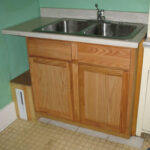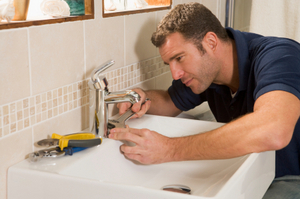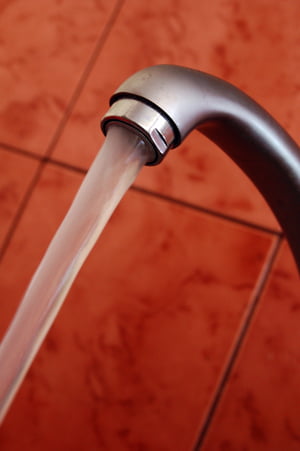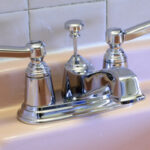Though we rely upon faucets for a wide variety of tasks – from showering and washing our hands to scrubbing dishes and watering plants – we tend to take them for granted until the moment that they stop running properly. It’s amazing how many areas of our lives are affected when the water’s no longer flowing freely. Fortunately, much of the troubleshooting and repairing required for fixing simple faucet problems can be accomplished without the help of a plumber. We need only a little knowledge and a few common tools.
If sink faucets are spluttering or our intended shower is coming down in a trickle, the blockage of water flow might be caused by a buildup of minerals and other particles from the water supply. This obstructing material is often visible as a grayish or white deposit. Oftentimes it can be eliminated without our having to remove the showerhead or faucet nozzle. These fixtures can be soaked overnight in white vinegar; simply fill a bag with the vinegar and then tie it tight over the showerhead or nozzle. In the morning, remove the bag and then brush away the deposits with an old toothbrush. For tough clogs, a needle or toothpick can be used to clear the holes individually.
If we can’t get water to flow freely from the shower after such a treatment, we’ll have to remove the showerhead. This is best accomplished with two adjustable wrenches: one to hold the shower arm steady so that it doesn’t twist and possibly damage the piping inside the wall, and the other to unscrew the head by turning it counterclockwise. If the wrenches are wrapped with duct or masking tape then they won’t scratch the pipes. When the showerhead is off we can wash it thoroughly with hot water and dish detergent, and then repeat the process of soaking overnight in vinegar and scrubbing with a brush.
If soaking and scrubbing its nozzle doesn’t help, clogging inside its aerator might be impairing a faucet. Aerators, which are located at the tip of most faucets, contain screens and a water restrictor. They direct the flow of water so that it doesn’t gush erratically, and also add air bubbles that help to reduce – and thus conserve – the water flowing out of the faucet.
Taking apart and cleaning an aerator is not a complicated task. Begin by wrapping the end of the faucet with tape so that it won’t get scratched as it’s removed. Then turn it counterclockwise with a wrench. When you take the tip off, and disassemble it, you might want to sketch the parts so that you’ll know how to put it back together again. Most will contain a couple of screens, a water restrictor, a washer and an O-ring. Rinse these all with water and then clean with a toothbrush. Use a pin or toothpick for the holes if necessary. Once the aerator is reassembled, with the buildup of deposits removed, water should be free to flow once again.






